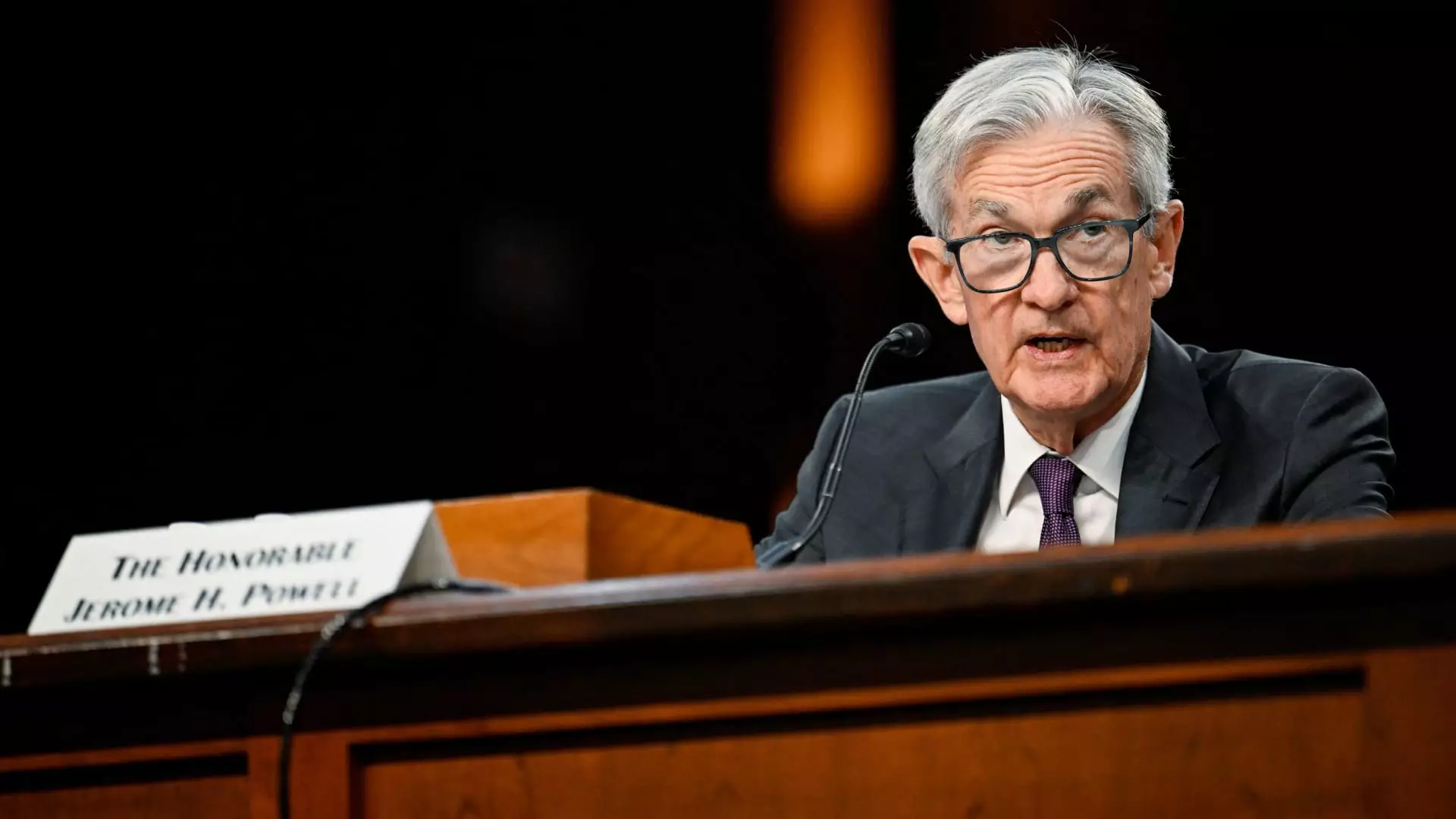In recent times, the Federal Reserve has found itself at a crossroads, characterized by an uncomfortable mix of optimism and trepidation. As policymakers assert that the current monetary policies are “well-positioned,” a deeper examination suggests that they may, in fact, be entrenched in a neutral stance. The complex interplay of economic variables and the ever-evolving political landscape has led to a policy environment where decision-makers are caught between maintaining stability and adapting to unforeseen challenges.
Fed officials have expressed a nuanced view of the ongoing economic climate. For instance, Atlanta Fed President Raphael Bostic highlighted the dual nature of the current environment—while banks show enthusiasm about potential shifts in tax and regulation, there remains significant apprehension stemming from volatile factors like trade and immigration policies. Such contradictions not only complicate the decision-making process but also underscore the pervasive uncertainty surrounding economic projections.
Throughout discussions surrounding policy updates, the term “uncertainty” has increasingly emerged as a central theme. Recent communications from the Federal Open Market Committee (FOMC) captured this sentiment well. During one of their meetings, minutes reflected a near obsession with the unpredictable elements that could sway the economy, such as changes in trade, immigration, and fiscal regulations. This emphasis on uncertainty denotes a shift in focus for the Federal Reserve, where potential risks now take precedence over established economic indicators.
For the Federal Reserve, the implications of uncertainty extend beyond just immediate fiscal concerns. Considerations surrounding employment data, which has shown relative stability, and inflation trends, which have fluctuated but remain a target, are now viewed through a lens of caution. The Fed’s aspirations of achieving a 2% inflation rate have remained elusive, with various members acknowledging the potential for inflation to surpass this goal due to fears surrounding tariffs and other economic pressures.
Statements from Fed officials hint at a cautious optimism regarding inflation trends. St. Louis Fed President Alberto Musalem noted that while he anticipates inflation could progressively align more closely with the target, he remains alert to alternative scenarios where inflation trends higher while economic activity may decelerate. This dual-fold perspective is indicative of a broader recognition that the economy operates within a fragile balance, susceptible to shocks from various external forces.
Despite this recognition, the Federal Reserve seems committed to maintaining a “modestly restrictive” policy framework, with current interest rates hovering between 4.25% and 4.5%. However, the discussions indicate a general awareness among committee members that the time for complacency has long passed. Chicago Fed President Austan Goolsbee aptly illustrated this dilemma, suggesting that an over-reliance on tariffs could lead to unpredictable shocks akin to those witnessed during the COVID-19 pandemic, further complicating monetary policy decisions.
The minutes from the FOMC meetings also drew attention to concerns surrounding financial stability, particularly in relation to the leverage levels and long-duration debt that financial institutions are managing. This represents another layer of complexity that the Federal Reserve must grapple with as it strives to calibrate policy. The remarks from economist Mark Zandi, emphasizing the fragility within the U.S. bond market, signal a growing worry about the system’s resilience in the face of rising debt levels.
Zandi’s warning pointed towards a potential calamity within the bond market, underscoring a general sense of unease. He posited that a major sell-off in the bond market could materialize in a relatively short timeframe, impacting broader economic conditions. Such an event could dramatically constrain the Federal Reserve’s latitude to cut interest rates in response to economic pressures, a prospect that financial markets have begun to anticipate, albeit with a significant degree of optimism that may not align with reality.
The Federal Reserve currently stands at a precarious juncture, tasked with balancing a myriad of complex and often contradictory economic signals. The narratives of cautious optimism regarding growth must be tempered by the reality of persistent uncertainties and risk factors that plague the economy. As the central bank waits for more definitive indicators, it may find itself firmly entrenched in a neutral policy position, aiming to navigate through turbulent waters until stability and clarity are restored.
The road ahead remains uncertain, but the commitment to monitoring evolving economic landscapes underscores the Fed’s preparedness to respond effectively, albeit cautiously, to the challenges that lie in wait.

